The Real Market With Chris Rising – Ep. 56 Larry Taylor
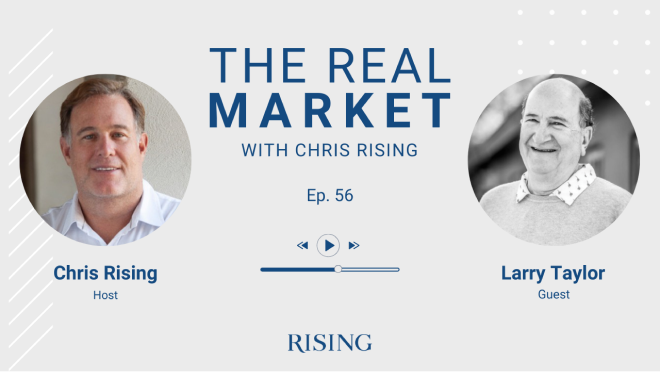
Chris (00:00:49): Welcome to the Real Market. I’m very excited to have Larry Taylor with me today. Larry is the founder and CEO of Christina Development or Christina, which is a private equity firm. It has grown from its roots as a small developer here in West Los Angeles and has grown to be much bigger. So, Larry, I am very excited to have you here on the Real Market.
Larry (00:01:09): Chris, thanks so much for inviting me to participate with you. I think it’s a great opportunity and I hope your audience finds our talk today interesting.
Chris (00:01:21): Well, I think they will. I mean, when you talk about Los Angeles and real estate, there’s really two areas that you talk about, downtown LA and West LA, Santa Monica, and you really built the name for you, your company and your team by starting… developing things in West LA, but I also should point out that you’re a very proud USC Trojan and that’s ‘flight on’ as they say, and you also really got your start in real estate with some of the legends that we all have heard about over the years, from Leventhal and Sam Freshman and people like that. I think we’re going to have a great talk, but why don’t we just start with, tell us where Christina, as a company is today, and what you’re working on day and we’ll work our way around that.
Larry (00:02:05): Thanks so much, Chris. Really, I couldn’t be more excited when I was listening to Congress talk about the Jobs Act and some of the things that they were talking about as ways to get Americans back to work, which was the concept behind the Jobs Act. And the conclusion by the consultants that Congress was working with, was that it was too difficult for small to medium sized businesses to access capital. The discussions led to the relaxation of securities laws under Reg D, which essentially, for 80 plus years, precluded the kinds of deals that we do in real estate, where we pooled capitals, syndications, and so on, from being marketed in 50 states. I mean, it just was an absolute ban on marketing.
Larry (00:03:01): So, there’s a lot of talk about what’s happened since these changes have occurred, but I sat back and listened to this and thought to myself, wow, with the internet and with the ability to market real estate offerings in 50 states, unregulated and without restrictions, other than accredited investor rules and so on and so forth, it’s not wide open, but the fact that you could even run an ad in the Wall Street Journal and the New York Times… Again, back in 2012, we weren’t as sophisticated as we are in 2020, or 2021, but I said then to my team, that this is revolutionary. So, the things that we’re doing now is basically taking the syndication model, which we had done for more than two decades, and the fund model, which we studied from 2009 to 2012, and we married those two concepts, and we’ve been incredibly successful in taking the opportunities out to accredited investors in 50 states, with no intermediaries.
Chris (00:04:15): Is there something in the back of your mind, because I know this happens to me, that every time you do it, you’re like, “Blue sky laws, blue sky laws. Oh no, the SEC.” We were all really trained in this business that, boy, if you even blasted out of facts with stuff, you were in trouble with the SEC. This is a major change. Do you still sometimes have to pinch yourself?
Larry (00:04:38): Yes, it’s groundbreaking, because when I started in the industry, when I founded the company, in California, we had the 10/25 rule, which meant you had 25 PPMs. They were numbered one through 25, or 101 to 25. You have to keep a log of who you sent it to, and then if they didn’t invest, you had to get it back, and you could have no more than 10 investors.
Chris (00:05:04): Yes.
Larry (00:05:05): That’s what we lived with. So, whether we were raising a million or 10 million, it has to be split up amongst 10 investors. When that rule went away, and we went to the Reg D 506(b), which was up to 35 investors. I thought, whoa, that was game changing, and it was. Now, there are, of course, securities limitations and the laws are not materially wide open. There was concern early on, on our part, for the first year and a half. We said, we’d better see what the SEC rules are, because it took about a year before they were implemented, but while everybody was focused on the relaxation of the rules, I didn’t find anybody, at least in our industry, that was focused on the… which is exactly what you were saying. We were scared to death to, even as you said, send the facts.
Chris (00:06:04): Yeah. Well, it’s…
Larry (00:06:06): I’d have a lunch…
Chris (00:06:08): I was going to say, yeah, you have a lunch. You’d kind of talk to somebody and say, “Please don’t say anything, and if I can get you to sign up…” I still remember the first fund I ever did in the early 2000s, was I had the box with the PPM, and if it’s sent out, you had to mark it all. The fear… and some people wouldn’t return them. “Oh, I’m sorry. I lost them,” and you’re going, “Wait a second, the SEC comes, I’ve got to be able to show that I sent it to you and you returned it to me.” It’s a different… I’ll tell you, what’s really different, too, and actually, this is such a great way to start. So much of our audience is gen Z and millennial, and I watched them on Twitter and they’re very aggressive. I am seeing people literally tweet out their track record and say with the tweet, “If you like this, call me for a deal.”
Larry (00:06:59): Wow.
Chris (00:07:00): And I don’t know… I assume it’s legal. I’ve asked some of our attorneys and nobody can really tell me it’s not, or it is. What I keep getting back is, “Well, you don’t want to have that kind of brand that you do that,” but this is a long way… I mean, well, it’s not crowd funding, because you do have to get through the accredited investor test, and you can third-party that now and have people do that, but this is a… it’s a far different real world of what real estate was in the ’60s, ’70s and ’80s, ’90s.
Larry (00:07:27): It’s agreed, and as you know, our industry is very slow moving. I mean, first of all, it’s an illiquid asset to begin with, but change doesn’t come easily and quickly in our industry. The entire structure of operator partnering with institutional financier, it’s like the operator has a financial partner, or it’s a REIT or it’s a fund, right? But the fund still has to find the sponsors to invest with. Those of us that have been doing it for a long time are very reluctant to move into this other area, but this is the future, because there was never an efficient way for investors to access real estate investment. It’s not like it’s going to be a big deal to get gen Z and millennials to understand it, because it’s not like it’s replacing anything. They don’t know that there ever was any other way.
Chris (00:08:29): Yes.
Larry (00:08:29): So, we think that, ultimately, the entire process is going to be digitized. I mean, digitalized.
Chris (00:08:37): Yeah. We agree. Now, the question I have for you is have you seen it… do you see it different when dealing with pension funds, or have you just decided, “I don’t want to deal with pension funds.” High net worth, RIAs, that’s the best place to go. I heard Mark Gangi of… the new CEO who’s taken over for Tom Barrack of Colony say that they raised $6 billion this last year, all over Zoom, and they treated everything as an event. So, if they wanted a tour… have their due diligence tour, they’d put GoPros on people’s heads and did it, but that’s the pension fund side of the world. My sense is, you don’t spend a lot of time going to CalPERS and asking them to invest in your funds. Who is your typical investor and how do you access them?
Larry (00:09:25): Well, I am not discriminatory when it comes to capital. In other words, I don’t really have any particular love or dislike of any source of capital. Money is money. The problem is that there are standard formulas in terms of fee structure, in terms of press, waterfalls, participations, governance issues that have been around for a long time. Those are things that I find are more repressive than they are progressive. I have experience… our firm has been partners with institutions. We have all sorts of pension funds and insurance companies as investors over time. We have successfully been converting them to the model, which is the syndication model where there’s just no middle person. There’s no… how do I say this?
Larry (00:10:43): It’s pretty basic. Real estate is a basic asset. It’s like, I live to not have a complicated structure. When I was a syndicator, it was very basic, 75/25 split, no preferred return, no waterfalls, no asset management fees, property management fees, asset acquisition fee, disposition fee, tax benefits. Very straightforward. It was so complicated dealing with institutions in the 0s. I remember in my joint venture relationship with Paine Webber, their waterfall was so complicated, I had to send it out to a third party analyst, that would do a 16 page diagram, that I attached to our JV agreement, so there would be no argument later on how we split profits.
Chris (00:11:41): You’re a very, very smart person. We were in a fight… we were in a disagreement with one of our private equity real estate funds, because we bought a portfolio of assets. We’re selling the last one and we can’t agree on what the promote a waterfall is. We think it reads one way, and I’m hoping we’re just going to come to an agreement, but I hadn’t even thought, when we did the deal originally… I didn’t even think that anyone could argue over what the waterfall was and how the IRR was calculated. Here we are seven years later, or six years later, and people are arguing about it. I’ll tell you, I have a friend who gave us the same kind of talk that you just did. If you can get people to do 70/30, 75/25, take a point or 50 basis points on the way in, a point or 50 basis points on the way out, no asset management fee, and pay a third party market property manager, that’s the simplest way to live, but it’s not the way that the consultants have set up our world, for the most part.
Larry (00:12:40): It isn’t. In fact, when you look at some of the fund lives out there that are three, five, seven year, it’s like, what? How do you get a 30 year loan when the life of your borrower is seven years?
Chris (00:12:53): Yes. [crosstalk 00:12:54].
Larry (00:12:56): Think about that. So, yeah. Look, I mean, I always say that the smallest percentage of investment grade real estate in the United States is owned by institutions. The largest portion of investment grade real estate is owned by individuals and families. If you really look at how… I mean, just the way that it is. So, institutions trade assets amongst themselves. Okay? And it’s the same assets that keep trading, because if you have a five-year fund life or a seven year fund life, you keep trading until the end of the fund life, then you have to dispose. Who’s going to buy the portfolio? Another institution. If the market’s in the toilet, your investors are going to get whacked. If the market is great, they’re going to do well. That’s the opposite of why you invest in real estate. If you’re lucky enough to own great real estate, you only get penalized for selling it.
Chris (00:13:56): Yeah, it’s…
Larry (00:13:56): Right?
Chris (00:13:57): You’re right. Yeah. So, some…
Larry (00:13:59): I don’t know. It’s like… Go ahead. Sorry.
Chris (00:14:03): Let me ask you this. So, here we are in 2021. When you put together this modern day syndication, are you doing it with a single asset, several assets? Is it on a strategy? And what’s the size of the vehicle, if you’re going out… If we had something today, what would it look like?
Larry (00:14:25): Well, we do have things today, but again, we would have no interest in investing in real estate, whether it was in Beverly Hills or whether it was in Miami, Florida, or anywhere in the United States, if we weren’t getting primed by the US government. Without the tax support, the benefits that we get, real estate makes no sense as an investment. I don’t care what anybody says. There are better investments to make that are liquid, that you can get in and get out, if you feel that you need to, besides real estate. The government rewards us. They motivate us, in real estate, to invest our dollars, and they give us benefits as they do in oil and gas, with special recovery, and so on and so forth, that they have.
Larry (00:15:21): So, I look at real estate and oil and gas the same way, because in real estate, we have depreciation amortization, which are non-cash losses that we write off against income. Then there’s the depletion allowance, which primarily is oil and gas. So, a great real estate investment is like an oil well that keeps on giving forever. It might start off at 500 barrels a day and end up, 35 years later, pumping out 30, but once you’ve recovered your costs, you’re pumping that oil out every single day, bringing in cash flow. Well, that’s a good real estate deal. So, the money that’s made in real estate over a period of time, sheltered, is how I look at it. It’s a hard concept, but to answer your question more directly, under today’s tax code, which really started back with the ’86 Tax Act and the pass of active loss rules, passive income is misunderstood by many individuals and firms.
Larry (00:16:29): They don’t understand that passive doesn’t mean dividend income or income received from businesses that you don’t participate in. Passive income basically means real estate income, and passive loss is the losses generated from depreciation and amortization of the buildings that you buy. So, for an investor who owns one property, okay, and that’s a million dollars to the bottom line, and then ends up with a $3 million loss on their schedule, K-1 or their tax return, that excess loss sits as a suspended item, unless there’s other passive income. So, after the ’86 Tax Act, millionaires became billionaires because they were forced to buy more real estate, to get more depreciation, to offset set their positive income.
Larry (00:17:25): So, we take that model and we say most people don’t have multiple real estate assets. You form an entity that looks like a fund and smells like a fund, and walks like a fund and maybe talks like a fund, but the reality is, it’s one entity that holds multiple assets. Now, in the early years, as you build a portfolio, you’re accumulating massive amounts of losses because you’re depreciating everything, bonus depreciation, thanks to the ’17, 2017 Tax Act, accelerated depreciation, amortization, personal property right offs. So, in the early years, you have massive amount of losses. These investors can’t use those losses if they don’t have outside passive income, which most people don’t. So, as the portfolio starts to mature, and there’s an exit, and let’s say there’s a $10 million game, but you have $27 million accumulated losses, there’s no taxable income.
Larry (00:18:29): So, the strategy of Christina real estate investors is to say, “Look, don’t buy 10% of one building, Mr. Investor. Buy 10% of an entity that owns 10 buildings, and allow those buildings to offset each other with respect to the after tax treatment.” Let’s say you get to a point in year seven, where you’ve utilized all of your losses against whatever gains you’ve accumulated. Well, now you want to look at things and say, how can I monetize these assets without having to pay tax? That’s where you get into financing options. When I sit there and explain to very sophisticated investors that you could have invested $10 million or $25 million in a project, and you can take out $400 million over its 30 year life without ever paying tax, they look at you with wide eyes saying, “How is that possible?” Well, it is possible. That to me, is the essence of what real estate investment is all about, and this is what we’ve been really pioneering with our private equity offerings.
Chris (00:19:41): So, if you’re offering a fund that has… you say it’s going to have 10 assets in it, do you feel like you have to be specialized in that? Do you have to tell people, these are going to be 10 office assets or 10 multi-family assets? And do you raise… do you have to seed that fund with a couple, or can you just do it… will your investors trust you and say, “Look, I’m raising a fund to buy 10 assets. Fund 10% of the overall capital today and I’ll go use it to buy it, or I’ll call it when we get the deals.” How do you do that?
Larry (00:20:13): Well, I think we’re fortunate that we have a 45 year track record of operating on the West side region of Los Angeles. So, we have hundreds of transactions, many of them audited back to 1993, where we have third party review and analytical testing of our track record and results. We just simply say, “Look, this is what we’ve been doing for 45 years. This is what we’re going to continue to do. If you want to know what the makeup of what this portfolio is going to look like, it’s not going be any different from what there was in the past.” What the past was is that in real estate, from our perspective, location, location, location will never be more important than… I mean are the most important aspects. So, when you’ve got location right, and you get price right, and you have a good sponsor, you have a winning formula. So, we’re geographic specific and product agnostic.
Larry (00:21:14): If we’re buying in Beverly Hills, Westwood, Brentwood, Santa Monica, Century City, West Hollywood, these markets, right? We don’t really have any preference over office retail, or apartments, or industrial, to the extent there is much in these markets. These markets have shown consistent resiliency and increase in valuation for… certainly since the early ’70s, when we first got invested, but the theory behind investing in the West side… I’ll have to hand it to Jerry Buss, who was teaching me the secrets of his real estate syndication business when it was Mariani-Buss and Associates. He said to me, “Look, Larry.” I was 21 or 22, maybe 23 at the most. He said, “The most important thing about this business is, you can never lose your investor’s money.”
Larry (00:22:07): I thought he was a really good guy. I mean, this guy really cares about his investors. He says, “No, that’s actually not what I’m talking about.” He says, “If you lose their money, you won’t have any money to go to the next deal.” You just want to keep the capital. You know what I’m saying?
Chris (00:22:24): Yeah.
Larry (00:22:25): You want to get them in and you want to make money, and you want to have them go forward, but I said, “How do you ensure that you don’t lose money?” He says, “We only buy apartment buildings in Westwood and Brentwood.”
Chris (00:22:37): That’s worked for Donald Sterling, too. Yeah.
Larry (00:22:41): Well, yeah. I mean, look, and when Jerry was buying the Lakers and the Kings in the forum, he needed to sell buildings, and again, that’s the Larry Taylor, Christina [inaudible 00:22:53] philosophy. Never buy real estate from someone that doesn’t need to sell it.
Chris (00:23:00): That’s great ’70s, is that right?
Larry (00:23:06): A graduate of 1975, class of ’75,.
Chris (00:23:12): Terrific, class of ’75. So, you come out of school. You’ve got some mentors. Jerry Buss, you just mentioned, and others. How did you start your company and how did you look at it as the opportunity back then? Did you know enough to know that this was going to be a career at that point? Or are you just putting your toe in the water?
Larry (00:23:31): Well, really, as a young guy, I mean, I was introduced to a real estate broker who was explaining to me… when my parents were looking to buy a home, and they didn’t have a lot of money. They were renting an apartment and I thought they should buy a house. I was very young, 12 or 13 years old, and I met this real estate broker. He took me aside and he said, “Your parents should buy an apartment building.” I said, “I’m trying to get them out of an apartment. I want them to buy a house, because all my friends have houses,” and he says, “Well, look, you can buy an apartment building that has an owners unit.” But I go, “What do you mean?” and he goes, “Let me show you.”
Larry (00:24:12): He took me around and he showed me some small apartment buildings on the West side, that had been built by developers that lived in their buildings. So, he goes, “Here’s how it works. You buy a 10 unit. One unit is the owner’s unit. The other units are one and two bedroom apartments. They pay you rent and you use that money to pay the loan that you used to buy the property.” I looked at the guy and I said, “That cannot be. You mean that I borrow the money to buy the property, I get to live there, and the other people pay the loan back?” He said, “Yes.” Well, I was sold from that day forward. When I was in college at USC and Sam Freshman came, and spoke to one of our classes, he had just written the book Principles of Real Estate Syndication-
Chris (00:25:02): Oh, one of the classics.
Larry (00:25:04): … and signed the book for me, which I still have. I didn’t quite get the concept at that time, but it struck me as being unique, but I have grown up with Ken Leventhal’s nephew, Ross. We were fast friends when we were teenagers, and through that connection, I’ve met Ken and his family. After a while, this whole mentoring thing was going on and I had to go to work for Leventhal when I got out of USC. Now, if you were an accounting student at USC, you were only going to a big eight firm at the time. There were eight.
Larry (00:25:48): So, when I told the Dean that I was going to accept a job at Kenneth Leventhal, I think his face went white. Like, “You have an offer from Arthur Anderson. You have an offer from Touche Ross. You have an offer from Pricewaterhouse, and you’re going to go to Ken Leventhal?” I said, “I have to.” It was almost a disappointment and I was a scholarship student, so it was almost like I was turning my back on the university that gave me life, but with a classmate in 1973 or four, we actually started our company.
Chris (00:26:28): Wow.
Larry (00:26:29): We were in a real estate appraisal class with Larry Brown. I’ll never forget, and our final exam was to actually pick a property and do an appraisal. So, we went to the LA Times, we found a property, and we called on it. We prepared our appraisal, and then we looked at it and we said, “Wow, we’re in the middle of president Nixon’s wage and level price freeze. We’re in the middle of Wellenkamp v. Bank of America, which froze the ability of banks to accelerate loans. This building had a good loan. Let’s buy it.” We did.
Chris (00:27:05): Oh my god.
Larry (00:27:05): We did. I got a C on the final and a B in the class. I said to Larry Brown, who was at Shadek and Company, and we knew the Shadek’s. I said to Larry, I said, “Well, I got a B in the class, but I bought the building and I made 30,000 bucks in 11 months.” To put it in perspective, tuition at USC at the time was $1600 a semester.
Chris (00:27:32): Wow.
Larry (00:27:34): So, I mean, my starting salary at Kent Leventhal was $925 a month, which after tax and other deductions, was barely enough to make my Mercedes payment and take my girlfriend to dinner. I had just made $30,000 when I was in college on a quick deal, on an apartment building. So, I was sold.
Chris (00:27:59): Wow. How did you… how did it go with your partners? Are these people you continue to do deals with after that first deal? Or was it a good learning experience, and you went your separate ways?
Larry (00:28:11): Well, we went our separate ways because my classmate, who became my partner, who I still have a friendship with… not as close as we were. It’s been many, many years, but I came from a very modest background. He came from a more substantial background. He had more freedom to do all kinds of things. He was very young and I was focused on being successful, and he had more of an appetite for risk. He wanted to become a builder. I just wanted to buy raw land and title it, and sell it to the next person to go build it, and make my money without taking the risk. Again, think about the accounting background, right? Accountants are always looking to mitigate downside risk-
Chris (00:29:00): Yes.
Larry (00:29:00): … and he had a real taste for going out and actually developing, and I thought… By that time, I had re-established my relationship with Jerry. I had Sam buzzing in my ear and Jerry Buss handed me his PPM. It was five pages typed, with a staple in the upper left-hand corner, no pictures.
Chris (00:29:25): Oh my goodness.
Larry (00:29:27): He said, “Here, follow this. Here’s our partnership agreement and here’s our subscription documents. Go do it.” So, I went out and I just started… I just said, “We’re not doing any more land deals. We’re not going to do anything on own,” because Jerry said to me, he said, “How many apartment buildings are you buying in a year?” I said, “What are you talking about? One.”
Chris (00:29:53): One.
Larry (00:29:56): He says, “Well, how do you do that?” I said, “Well, I have these two banks that really like me.” I said, “I got home savings. They like me, they made me the first Christine loan.” Then I go to, maybe it was Western bank or one of these other banks, a small Westside bank, and they’d loan me the difference. Then I would go buy a building and figure out how to raise the income, and grow its value and then sell it. Then he goes, “Then what do you do?” I said, “Then I do another one.” He goes, “That’s linear.” I go, “What do you mean?” Now, he had a PhD in mathematics. Alright? So, he goes, “You could do five buildings in one year.” I go, “How?” He goes, “Well, if you syndicate and you get 20% of the profits of five deals, and you use the other guy’s money, you’ll own one building for free, five 20s. If you do 10, you’ll own two buildings for free.” He goes, “That’s how it works.” I was sold. Pulled up with my partner and that was it. I never looked back.
Chris (00:31:06): Well, let me ask you this, because one of the things that we talk about internally is… the issue with apartments and all is, little dollars can become big dollars really quickly. So, if you have a hundred units and you’re going to come in, and you’re going to replace a hundred refrigerators, if you do the one wrong, you multiply that, it becomes a big problem. How did you early on learn to control your costs, so that if you underwrote going into buying an apartment building, you were always within the amount of capital which you thought you needed? Or are there some mistakes you made that might be interesting to talk about?
Larry (00:31:41): Well, there were a lot of mistakes, I will admit. None of them ever failed. To this day, we’ve never lost money on a real estate investment. There were some that didn’t make a lot, but we didn’t lose money, but the whole thing really comes down to, you buy your profit on every deal. If you don’t have a profit going into the deal, you’re probably going to have a lot of problems going forward. Only in an up market can you pay retail and still be rewarded, and I think that’s why we see the cycles in real estate that we do, because everybody’s getting on the train as the market’s going this way, thinking that it’s ever going to continue. We only are interested in buying real estate, as I said when we started this program, which is, I need sellers that need to sell. I only look at deaths, divorces, bankruptcies, partnership disputes. Those are the only reasons that people really ever sell great real estate. The downside risk of over improving or under projecting your cap costs, if you’re going to do improvements, can be easily softened if you actually bought right.
Chris (00:32:57): Yes. Makes sense.
Larry (00:32:58): And that’s really what is within our saving grace, which is… and the truth is, again, getting back to that location, location, location thing, right? Where, if you do spend money appropriately, okay, you’re going to get higher rents. I was criticized early in my career… actually, throughout most of my career, I always paid too… I was criticized for paying too much. Then I was criticized for spending too much. Like, when I got an award for a building 30 years ago from the AIA, but I hadn’t built it yet, and my colleagues said, “Oh, that’s the kiss of death.”
Larry (00:33:38): If the AIA gives you an award, it’s a building that can never be built economically. I learned that from Bill Pereira, who designed Fox Plaza. I used to visit with Bill in his office, and the model was sitting on the table, and I said, “Is that ever going to get built?” And he goes, “I don’t think so,” but it did get…
Chris (00:33:56): It did.
Larry (00:33:56): It got built by Marvin Davis, who didn’t know that there was downside risk. He already owned the land, built the building, and it was a huge success, as you know. It was pre-leased substantially to Fox, of course, but… So, I think that great location, great architecture and properly done, you’ll be rewarded. I paid the highest price, I had the best architects, and I got the highest rents and sold the properties for the highest amount. So, I think that combination of really being able to understand value, which doesn’t come easy to a lot of people. You can’t teach that in college. You can teach all these underwriting techniques. I have a lot of younger MBAs come to work for us, and they are able to run models like you wouldn’t believe. I mean, it just turns me on to see all that. Then I look at the numbers and I go, “You really think you’re going to exit that property at $3,700 a foot in year 10?” In other words-
Chris (00:35:01): Yes.
Larry (00:35:02): … why do we call it real estate? Get real!
Chris (00:35:04): Yes.
Larry (00:35:09): It doesn’t make sense. But I think about mistakes, touching on that, and I remember buying this fantastic apartment building in Beverly Hills and going to Donald Sterling’s CFO at the time and trying to picking her brain as to whether or not I should buy, and I’m trying to get some of the rants, because Sterling had the biggest portfolio and I make the decision to buy it. Then I renovate the thing beautifully, and then I’ve got all these units to rent and I can’t rent them, because they’re all one bedrooms, and in Beverly Hills, people don’t want to rent… want to rent apartments that are two and three bedrooms, so they can send their kids to Beverly Hills schools.
Chris (00:35:49): Oh, wow.
Larry (00:35:50): Never dawned on me that young people don’t want to live in Beverly Hills at that time. I don’t know if it’s changed materially, but it was a big mistake, but I successfully sold it to a well-known actor.
Chris (00:36:04): Well, let me ask you. Early on, did you see a difference between owning a multifamily versus office? The criticism, and obviously this is something I’ve known a long time, is when we lose a tenant, it’s a big cost to bring in a new tenant. Whereas with apartments and industrial, there’s much less of a cost. Did you ever view that as a reason not to do office? Or how do you look at that issue?
Larry (00:36:29): Oh, I have a simple answer to that. Back in the early days of Douglas Emmett, I’d have these long discussions with Jack Douglas and a few of the other people there, Ken Panzer, and I’d say, “Gosh, you guys, there’s no money in this office building business.” I said, “Your revenue is screwed. You’ve got to pay commissions going in, tenant improvements, free rent. I mean, it’s crazy.” I had never liked it from that perspective, unless you bought it right, and you had the best of the best. So, in the early days, the first real estate investments that Douglass Emmett made were apartments.
Larry (00:37:17): Then they decided to become developers of office buildings, and the first three office buildings they built were an absolute disaster. One of which was the Tocaloma Swimming School on little Santa Monica Boulevard that was a disaster. I said, “See, you guys, you learned your lesson, right?” But as things matured and the company grew, and Dan Emmett’s focus was… he said to me one day, “I’m going to buy every single office building in Brentwood. I’m only going to buy the best ones and I’m going to control the market.” I think that there was some substance to that, but the money in a high rise, or what I say, class A office, seems to be made on the trade rather than the operation of it.
Chris (00:38:04): Yeah, that makes sense.
Larry (00:38:06): But I think that… but Bob Hell’s dad, the guy that I’d met early on in the high rise in Century City that he’s built and owned forever, is the family’s cash cow. So, it just depends what your strategy is. If it’s a long enough term hold and you’re in right, it can be fine, but as an operating model, I think that leaves a lot to be desired.
Chris (00:38:31): It does, and we’re going through an interesting change, and I mean, a real marked change in how people work. It’ll be interesting to see what the role office plays going forward. From our experience, class A tends to do well. We’ve done well with all of our class A, and all of our value add… need to do leasing buildings. We’re struggling with those. We’ll get through them, but we own one Cal Plaza, and guess what? Those tenants pay their rent, and people are… we’re actually doing leasing in that building, because I think there is the view that office will play a role, but boy, you start to look at what you have to spend compared to what we’re spending on our industrial platform or our multi family. I mean, it’s not even night and day. It’s like two different years. It’s so different.
Larry (00:39:17): I don’t know. Those projects, like Cal Plaza, those are such high quality, very, very… they’re trophy assets. So, like I said, the combination of location and quality, and architecture and management, and sponsor, if you build the best, you’ll attract the best, and those will always have value. But what we did on office on the West side, which was not high rise, essentially. I mean, no real material, high rise market, except outside of Century City, and maybe somewhat in the West side, some of the brand stuff and some of the stuff along in the Westwood area, but the office buildings that we would buy would be from 10,000 to 40,000 square feet, that we could operate efficiently without a lot of overhead costs and without a lot of tenant turnover, that we could sell someday to an owner. So, we would hold them as an investment. We did very, very well on the operational side, and then we would sell them to users, and users would pay a premium.
Chris (00:40:23): Yes, they will.
Larry (00:40:23): I think today, post COVID, right, is that the theory of going to work and going up in an elevator, and then being in this glass tube without windows, and sharing the air conditioning, and all of that with people, I think that’s going to be challenging going forward because this is once a 100-year pandemic. I think that where we’re going with it, and we’ve started to do this a little bit, is to start buying up these smaller buildings again, and leasing them out to firms that don’t want to be in the high rise. They don’t want to share space. They don’t want to share bathrooms. They don’t want to be in an elevator with anybody else. If you can give them their own building with windows that opening and their own parking, I think there’s a premium to be had on that-
Chris (00:41:11): Yes.
Larry (00:41:12): … and I think that’s going to be more representative going forward. As far as high rise, I think that if you can section off spaces, if you can ventilate them properly, if you can create more defined spaces that are less shared, I think that’s going to have a material benefit [crosstalk 00:41:32].
Chris (00:41:32): Yeah, like [inaudible 00:41:33] and some of our other projects. We have a building app that is totally interactive. You never have to touch anything. It knows when you’re there. It only allows certain amount of people into the elevator going to your floors. We’re now upgrading at your show air quality, showing about how much outside air we bring in, because we have to address all of these things. Because I agree, to get a law firm of a hundred thousand square feet to come back on a consistent basis it’s people need to be able to do that. They also need to be able to work outside in a convenient area.
Chris (00:42:03): This indoor outdoor is really big. So, we’re… but I also, until we get through the pandemic, until people feel safe, I just don’t think we know exactly how the office market’s going to go. One of the other areas that you’re very involved, just going to switch over a little bit, because you built a big reputation on retail, and you have a strong understanding of the retail market. That has obviously changed dramatically, even pre COVID. What’s your view of retails on the West side?
Larry (00:42:34): I have been a fan of acquiring street retail, because again, if it’s out of favor, it catches my attention, because that means I’m going to be able to acquire where people aren’t looking, and not overpaying for real estate. Fact is, that street retail has been around almost since the existence of humanity. I mean, people want to be out there and it’s just never going to go away. I wrote an article on this a couple of years ago for Investor Advisor Magazine. It was like people want to be entertained while they shop. They want to shop while they’re being entertained.
Larry (00:43:17): They want to be out, and they want to see and touch, and feel things. That will never go away. That speaks volumes for more of an outdoor shopping mall, like Rick Caruso’s projects, but it’s the street retail that’s even more… is always going to be in demand, and will be even more in demand. It’s just the Los Angeles has very few pedestrian oriented retail streets, but I think that that is never going to go out of fashion. So, I’m very, very focused on that. We are, as a firm, very focused on that. Let’s face it. There’s a lot of boarded up storefronts.
Chris (00:44:06): Yes. Yeah.
Larry (00:44:07): I look at that as opportunity more than a negative.
Chris (00:44:12): Well, can you talk a little bit about… having started your business in the ’70s and seeing what happened in Santa Monica along Montana, where I know you’ve had a great expertise, and then what happened over on 3rd Street Promenade as well. Can you talk about how those areas developed for retail and why you think that that’s really still going to be important?
Larry (00:44:40): Well, yes, and it’s so interesting because when we started investing on Montana Avenue in the early 80s, there was a huge push to invest on the 3rd Street Promenade. The problem on the 3rd Street Promenade at the time was that owners who were interested in selling wanted prices that were based upon what it might look like in the future. So, they were pricing in this material growth, whereas on Montana Avenue, which was basically neighborhood serving retail, but where people would come from other areas just to be able to park on 7th and walk up to 16th and back, I saw that as… Again, I was only interested in upscale, affluent neighborhoods, serving types of locations, prime, prime, prime, but the Promenade had parking.
Larry (00:45:28): The Promenade still had Frank Gehry, Santa Monica Place at the time. The Promenade had movie theaters, and movie theaters drew restaurants, and movie theaters and restaurants drew people, and people are actually what drew retail. Rents on 3rd Street Promenade were hitting $20, $25 a foot per month. Whereas Montana never went beyond $7. We started at a dollar and took it up to $7 before we sold our portfolio to John Anderson, but had I invested the same amount of time and money on the Promenade, I think we would have done extraordinarily better, but look at the Promenade today. It is just a disaster, and it’s a disaster because those buildings that were built many, many years ago were never built to essentially meet the needs of pedestrian retail.
Larry (00:46:24): The buildings either had large basements, were very, very deep. Their relationship to storefront width, the depth was off. Then you had a lot of these majors moving in and Federal Realty did a great job in converting some of these buildings. When you could lease anything to anybody, as one of the few locations in Los Angeles, basically transported Westwood Village to the 3rd Street Promenade, but now when you go there and look at that inventory, it just doesn’t meet today’s retail, because where we’re at now in retail is, anybody that’s looking to buy anything can find it on the internet. Alright?
Chris (00:47:08): Yep.
Larry (00:47:09): So, they want to go… they still want to see it and touch it, but retailers don’t need all of that extra square footage to store merchandise because they can deliver to you same day. They only have to keep a representative sample in their stores. They just need less square footage, but years past, it’s like a project we’re doing on [inaudible 00:47:31] right now where there’s 17 stores that are 1,000 square feet each. Alright? 60 foot depth, right? And that was pedestrian retail a hundred years ago, and that’s where we’re going again. The boutique space where people can still come in and see them touch it, and if they like it, if they don’t have it in the store, you’ll have it the next day, or you’ll have it that day. I think that’s what we’re going to see more of, and I think that’s kind of the future of retail, and I could be wrong, but I think that’s more likely right than wrong.
Chris (00:48:10): I think what you’ve just described is Amazon’s retail… hard store retail concept, which is very limited. You come in, you can get a few things. If you like it, and then you want a different size, it’s delivered to you tomorrow. I think the great thing about where we are in the world today is you use something like Shopify, you can be a small shop owner and be up online, and have inventory somewhere else in Kentucky or some other place. It’s really simple now to get someone up and running on a small store, so I think you’re exactly on it. I think that that’s going to continue to happen in the places like… just being Southern California focused, it’s going to happen on Montana. It’s going to happen on Large [inaudible 00:48:51]. It’s going to happen in Pasadena, where people, small players can get in and be very big because of the technology that things like Shopify offer.
Chris (00:49:00): I do want to kind of transition a little, talk about apartments, because just as we’ve said, office is going to go through a major change than retail has. With this new work from anywhere, or work from home, but I think the term is ultimately going to be work from anywhere, there’s a lot of discussion about how you would redo either from scratch or in a value add situation, how you would redevelop. What do you think an apartment complex is going to look like? Are you going to have spaces for people to work in their home, or we’re going to see more bedrooms, like you discussed with Beverly Hills back in the past? What do you see happening in retail and multifamily residential over the next few years?
Larry (00:49:39): Well, there’s a, there’s a contrast between urban and suburban. So, in the suburban markets, apartments tended to be… at least in the Southern California and across many of the southern states, there are larger apartments. They’re livable, they have grounds, they have entertainment facilities. I don’t think the future of that is going to materially change. I think in the urban core, like Los Angeles, the need to have an apartment close to where you work is probably diminishing now, because there’s no need to travel for 48 to 55 minutes to get to work, only because you’re only going nine miles, but you’re in traffic, right? Yes. I think that there’s going to be a lower demand for urban rentals generally, because a lot of the…
Larry (00:50:39): Our own firm, a lot of the things that we are now dealing with, having our employees working in the field, they just don’t need to come to the office and they’re doing just fine. I think that that means less need for employees to be living close to the company core. I think I see increased… and we see it already, is we have increased vacancies, lower occupancy. Across the board, rents are lower, even if landlords don’t want to admit that fact. When you add in free rent and other concessions, you’re actually just getting less rent. I don’t think that trend is going to change, and I think it’s actually good for business because we need less space. We can get along with less people being in the buildings, and there’s going to have a dramatic decline on the demand for apartments in the urban core.
Chris (00:51:34): Interesting. There’s been a lot of talk about post pandemic, whether people flood back to the urban core because of the 24 hour lifestyle cycle to it, that people… young people want to be in New York City once the pandemic passes, and want to be in places. There was a big push in downtown LA. So, you’re not convinced that that’s going to happen. You think people will still stay more in suburbia than coming into an urban core?
Larry (00:52:02): Now, I think that the need to be in the orbit urban core is different than the desire. See, you’re talking about desire. I want to be close to the bars. I want to be close to the clubs. I want to be close to restaurants. I want to have all of these things at my fingertips, but that’s really not LA. I know we’ve been trying to create a more vibrant downtown Los Angeles and we’ve done so in the last 15 years. I mean, what’s happening is amazing. Everything from South Park to the arts district, to the financial district and a lot of great things which millennials and gen Z, and those that left LA, went to school in the east, like my children went to school in New York and didn’t never want to leave the city.
Larry (00:52:46): Come back to LA, they didn’t have that same experience, and so they’ve really focused on Echo Park and Silver Lake, and downtown, because it’s the flavor of the urban experience. I don’t think that’s going to change. It’s just a difference between need and desire. I think as developers and investors, we need both need and desire. I think… so-
Chris (00:53:10): That’s true.
Larry (00:53:10): … when you need out, you’re going to take us about a 30% or so… it’s just a guesstimate, but it’s going to take a hunk out of that demand. It’s just a matter of reality.
Chris (00:53:26): Well, maybe that’ll help solve some of our housing then, because the rental drop… I’ve certainly seen that in downtown LA, the rents have dropped precipitously in the last year, and maybe that’ll make it a little more affordable, but I won’t hold out too much hope for the affordability in Southern California.
Larry (00:53:43): Well, I do think you’re right, though. I think that with price adjustment… again, when rents get up to 2,800 to 3,200 for a one bedroom apartment in downtown, admittedly, it might be in a new glass tower with a concierge, but if you can live at the beach for 2,600, okay, you’re just going to move, because people don’t jones to live downtown LA in a glass tower. People don’t come to Southern California to even think about living in a high rise. They want to be in a house with a front yard and a backyard, and a pool, and five minutes from the water. So, our single greatest asset is location, and what makes our location unique, special and valuable is the climate. Look, it’s the middle of winter. It’s 83 degrees and sunny. Alright?
Chris (00:54:31): Yes. It is amazing. Yep. It is amazing.
Larry (00:54:33): Then there’s no mosquitoes.
Chris (00:54:35): Yes. Is it worth 13% state tax? That will have to be decided.
Larry (00:54:40): I think it’s worth the 18%.
Chris (00:54:41): Yeah.
Larry (00:54:45): I mean, people are willing to pay the price for the benefits that they achieve.
Chris (00:54:50): Yes.
Larry (00:54:50): There’s just no question. I just came back from Rick Caruso’s a hotel in Santa Barbara, and I’d heard a lot about it and I know it took years, and he did a fantastic job. The quality, the details, the service. Yeah. Well, it starts at $2000 a night, but you know what? There’s plenty of people who will pay for it because it’s that good.
Chris (00:55:16): Yeah, I agree with you.
Larry (00:55:17): So, and same thing with California. Southern California’s climate is the best year-round climate in the country, and equal to anything like that in the world, plus it’s the US. So, for a lot of reasons, California has never going to price people out, despite the headlines.
Chris (00:55:37): We agree. I agree with you, too. I get a lot of pushback. I try to tell people… I remember my father going around in the late ’70s, early ’80s with headlines from Time Magazine then saying that the California dream was over. People have been hitting us for a long time, saying that it’s over and we work our way through it. We’ve got to solve a homeless issue. We’ve got to solve some affordability issues, but at the end of the day, my wife and I walked around the Rose Bowl today, this morning with our dog, and it was heaven. I was on a call early this morning with someone from England, and it was raining and the weather was awful. You just go, there’s a reason why. Let me ask you this.
Larry (00:56:18): That’s it.
Chris (00:56:18): Yeah, let me ask you this. So, Los Angeles, Southern California has certainly become much more institutionalized in terms of its ownership of its multifamily stock, of its office stock, and it’s industrial and retail. You’ve made a career out of not buying from the institutional buyers. Do you have any great stories about your attempts to try to buy from kind of the pension funds or the pros?
Larry (00:56:45): Yeah. Early in my career, but not too early, but I was buying a property from an institutional owner and I was very attracted to it. I thought it was beautifully located, and I thought it was a good buy. So, I got into the due diligence of the project and kind of learned some things that made me pause, to the point where I thought we were paying just a bit too much. I called the broker that had put us together, and I said, “I just can’t pay that price.” The broker said, “Well, let’s have a meeting.” So, went to the meeting. Happened to be fortunate enough to be sitting with the president of the company and I said, “I’m having a problem with this deal,” and they said, “What’s the problem?”
Larry (00:57:43): I said, “Yeah, the price is just too high.” During the meeting, I learned that they had just purchased it maybe months earlier, and they were just looking to make her quick maybe $5 million, and I was only willing to pay $2 million more, or $3 million. Then I looked at them and I said, “Now, I just checked your stock price, and based upon the price of your stock and the amount of shares outstanding, I could buy the whole company for slightly more than you’re trying to sell me this property.” Now, I want you to understand what the faces looked like on the executive team.
Larry (00:58:26): Now, you got to keep in mind, too, is that I’ve rarely, if ever, worn a business suit unless, it’s a bank meeting or a funeral. So clearly, I walk in with a beard and my baseball cap, and a tennis shoes and a little bit of long hair hanging out the back of the hat, and I’m telling these people that I want to buy their company. Because why buy the milk when the cow is so damn cheap? But after we got past that and I totally pissed them off, I finally… they said, “So, do you want to buy it or not?” I said, “I can’t buy from pros. You guys are too smart. I can only buy it from schmoes.” That line has followed me for the last 30 years.
Chris (00:59:11): Now, that’s a great line.
arry (00:59:13): Whenever I see these guys, it’s like, oh my god, the schmoes thing, but the reality is, is that if you want to make a good buy on something, do you really want to buy it from somebody that knows every single aspect of why it has value and why they’re going to extract every single penny? Or do you want to buy it from someone that needs to sell it for a particular reason, or maybe doesn’t see what you see? There’s a… I don’t know.
Chris (00:59:46): It’s a great line. It’s a very true one. Very true. Our biggest success in our career… in my career, has been buying from people, as you said, who had a reason to sell that wasn’t because they were looking to harvest profit. If they had a reason to sell strategically, that made sense that they had to, and that’s the one thing about these funds out there, is sometimes it is good to buy from a fund, because of they’re facing the end of their fund life and they don’t have any capital to put back in it, that’s probably a good person to buy for them.
Chris (01:00:13): So, I agree with that. Let me just kind of… I could do this for hours, but we got to keep it so our audience can do their jog, or watch it simply, but I want to just circle back to, we started… You started in a place that was just really important, talking about the benefits, the tax benefits of owning real estate. We talked about how you get out in front of people since the Jobs Act of 2012. How do you see technology having changed you in your business, and how you work in your business? Do you find that it’s easier to work today than it was 15, 20, 30 years ago, because technology has made your life easier, or less so?
Larry (01:00:56): I wouldn’t call it easy, as I would call it much more efficient to be able to do more with less effort. Okay, but easier would mean that there’s less stress involved in what we do in this business. As you know, Chris-
Chris (01:01:11): No.
Larry (01:01:11): … it’s never that easy.
Chris (01:01:12): Yeah.
Larry (01:01:12): But in terms of being able to manage your team, to be able to communicate effectively with the push of a button, the ability to wake up at 3:00 in the morning with an idea and pull up your phone and send it out to your entire team, or communicate from wherever you are in the world, certainly has been beneficial now with respect to the technology that we have and the willingness of the LA County Recorder to accept documents electronically, so we don’t run messengers down to the Recorder’s office at 8:00 AM, and being able to more effectively, in Southern California, use gap closings, which is more likely in New York, right?
Larry (01:01:53): Where the title company declares the deal closed and you don’t have to wait for money to change hands, and evidence of recordations. We scan everything today, whereas we don’t need messengers, so the speed with which we can get things done has materially changed, and also the way we collect money and pay bills, which is completely electronic. So, there’s a tremendous amount of efficiency brought on by technology, and I think that same technology is going to translate into how people invest in real estate.
Chris (01:02:26): Yes. Yeah, I agree. Now, let me ask you this.
Larry (01:02:29): And I…
Chris (01:02:31): Do you think we’re far away from having notary’s going electronically and not having to do wet signatures, or you think that’s going to just be at the pace of whenever government upgrades to Microsoft 10 or something?
Larry (01:02:44): No, I think we’re probably about a year away before we just notarized electronically. Right now, you can provide your credentials to a certified notary, and the certified notary can attest to it, and it’s all done electronically. It is now, but it’s not quite there yet consistently, but just the fact that we don’t need original documents right now to record-
Chris (01:03:09): Yes.
Larry (01:03:10): … is groundbreaking. I just closed a materially, significant loan, a Freddie Mac deal, and everything was done electronically.
Chris (01:03:18): Yes.
Larry (01:03:19): Everything. I never saw anybody, never did a hard thing. All the original documents are still here somewhere. I mean, yeah, technology is going to essentially allow us to grow our footprint and grow it faster, and I can really benefit from the efficiency. So, I think that it’s a game changer for an industry that moves and changes very slowly.
Chris (01:03:47): Yeah. I agree with you, and we pride ourselves in that, too. It does take away some of the things that I remember growing up in the business that had a lot of pomp and circumstance to… When you signed a deal 15, 20 years ago, I would say even just in the ’80s and ’90s, there was a… everybody got into a room, there were pens. I still love when Ruth Galanter said to my father, when he got Playa Vista approved, she said that that EIR better be Bulletproof. So, we brought her in to the room and there was 18 binders next to each other, stacked on the side, and my dad said, “There you go, Ruth. That’s bulletproof. You can’t shoot a bullet through it.” So, some of those things the next generations will miss.
Larry (01:04:30): Yeah, those are there… yeah. The closings were always a big deal, and now a closing is like a no big deal, because we don’t have that… but it’s change, and I think that just like you and I are having this discussion, almost as if we were together in the same room, we didn’t have that capacity a few years ago. Today, when we talk to our kids on the phone, it’s always FaceTime now, so we see them when we’re talking to them. It’s almost like watching Dick Tracy or the Jetsons. When I was growing up-
Chris (01:05:07): That’s right.
Larry (01:05:07): … could that be possible? Maybe we live in an era where rocket technology is changing, and private enterprise is going up to outer space. So, it’s a material change in an industry that is real reluctant to change. I think-
Chris (01:05:21): That’s very true.
Larry (01:05:25): … it’s going to take time, but the pandemic, if anything, has accelerated the need for technology and I think that your…
Chris (01:05:35): So, let me ask… I was going to ask you this, because I think one of the things I’ve found with my podcasts, and what people really appreciated, is that there are young people out there that don’t have the kind of mentor relationships that we had. The world is different. You don’t get invited as a young person to go to a business dinner the way you used to, or just be a fly on a wall in a meeting. If a younger person now that… say they’re just out of college in their early 20s, Larry, came to you and just said, “Hey, I could use some real advice. Real estate sounds like a good business to be in. What should I do? How do I get into real estate in 2021?” What would be your advice to them?
Larry (01:06:17): It’s always the same. Do what you love, not what your parents tell you to do. If you feel that you have a natural talent, if you feel that you have this calling, right, then do everything you can to absorb as much knowledge about it as possible, and seek out opportunities that will allow you to express and understand, and follow what’s in here, not what’s up here. Because at the end of the day, you can make all the money in the world and be successful in something that you hate and you will end up not being happy, and you’ll never be quite as successful as you will be by doing what you love and being happy, because that will force you to want to do more, because you’re enjoying it. Our industry, as you know, Chris, from being in it a lifetime, and the family that’s been it in a lifetime, it’s like, it’s broad.
Larry (01:07:13): There’s so many areas in this industry that you can grow in, whether it’s on the finance side, development, construction, syndication, securities funds. I mean, it’s endless. If there’s a calling… but there has to be a calling. I think all of us as humans are born with certain attributes, and certain capabilities and talents, it’s like search within the find that, which is a calling, and go for that, because I have had lots of situations where I’ve had people come on board here at the firm, and they think they want to do it. They think they understand it, but they don’t have it. You just have to follow that. So, my advice is listen to your inner self, because you have to love what you do or you’re going to not be successful, or you will be successful, but you’ll be unhappy.
Chris (01:08:11): Yeah, and that’s all very good advice. We’re going to… I’ll finish with this. So, there’s a lot… this is a tough time we were living through. We had the events of January 6th in Washington, DC and we’re still at the height of a pandemic, and we’re having a tough time getting vaccines out. I’ve seen a lot of things in the paper, the international press saying that we were headed to a very, very difficult recession, and that’s going to be very painful, and there’s a lot of unknowns about real estate itself. With that as a backdrop, which isn’t a very fun backdrop to give you, where do you think we’re going to be in the next year or two in the real estate business? Are you optimistic, pessimistic, not quite sure? What do you think?
Larry (01:08:54): Well, I am optimistic from an acquisition perspective. I’m pessimistic about where values are going with respect to… generally across the board, because with the decline in rental income, and there’s a certain decline in values, and I think that right now, it’s extend and pretend, if you remember that line from years ago. Now, it’s still… it’s extended and pretend again. You’ve got so much in the delinquent pipeline that the feds have said to the banks, look the other way. You’ve got all of these tenants that haven’t paid rent, that we can’t evict and we can’t pursue. I think all of this is piling up and I think it’s going to get darker before the light.
Larry (01:09:45): I don’t know what the extent of the federal government is to continue to essentially print money. Certainly for those of us that have seasoned portfolios and sufficient liquidity, we’re benefiting. We’re borrowing at rates that were never dreamed of. I’m borrowing in the twos and I used to borrow, at one time, at 24%, and that wasn’t the kneecap lender, that was the bank at prime at 21.5%.
Chris (01:10:14): Yes.
Larry (01:10:15): So, we need inflation because we’re never going to be able to pay back. So yes, that argues to be in assets that will appreciate with inflation. On the other hand, we are stopped from that because of the other fiscal and fed policies that are very confusing, but I do believe that we’re headed into a very opportunistic time to buy real estate, but I think the devastation that’s occurred in the entertainment world and the hospitality travel, office, apartments, I think it’s all problematic. There’s a decline, and we’re just not seeing it yet because we’re wrapped up in a lot of other things. Look, I’m not hoping for that, but I think the reality has to be dealt with.
Larry (01:11:09): When you look at the delinquencies and you look at the CMBS maturities, and the number of workouts, and the number of servicing agreements that are being extended, empty hotels don’t pay mortgages. Empty office buildings don’t pay mortgages. Apartment buildings, when my colleagues report 93% collection or 95% collections, they’re not telling you that’s based on a 74% occupancy.
Chris (01:11:36): Yeah. Yep.
Larry (01:11:38): Right? Yeah. I’m 30% vacant, but on the 70% that’s there, I’m collecting 93%. I always say, I look at things in my eyes wide open. I read everything and examine everything, and what I see on the landscape is troubling.
Chris (01:11:53): Yeah. I agree.
Larry (01:11:54): Sorry.
Chris (01:11:57): I just don’t know when we’re going to get clarity on the eviction issue. I mean, our system is set up as hard, as it may be, that if someone can’t pay rent, you can evict them and you can bring in someone new. There’s just no clarity. Things just keep getting kicked. We’re going to prevent evictions. We’re going to prevent evictions. We have an office deal that we’ve got… it’s space that can’t be released because there’s still tenants and they haven’t paid rent since March. I don’t know how we deal with that. I mean, fortunately, we have a lender who’s working with us. We’re all on the same page, but at some point, the lender is going to say, “Music stop.” Hopefully we’ll see something out of Washington in the first month or two that starts to deal with this, but until people feel safe, I just don’t think we’re going to know where we’re going to end up, other than there’ll be opportunities.
Larry (01:12:46): Well, I’m actually optimistic about the vaccine. I think that’s going to make a material difference the more that it’s rolled out, and the more people are vaccinated. Plus, with more and more people getting infected, conceptually, there’s a herd immunity, although there’s controversy over how long that immunity lasts, but I think science and technology has been incredible to develop this RNA based vaccine, which is the injection of these potentially live virus. It’s never been done before, but it is working and I think it’s very promising. I actually think that we have a good chance of having a recovery, but once we start to recover, we’re going to see all of the basic destruction that’s occurred economically.
Larry (01:13:40): It’s concerning on the one hand, and it’s opportunistic on the other. It’s a somewhat of a… like the scales of justice, law and equity, right? Bad on your existing portfolio, good on what you’re acquiring. Maybe it’ll balance itself out, but there will be opportunities. Again, maybe we are over hotels, and maybe hotels will be converted to something else. Maybe it will become more senior housing, which we need as the population matures. There’s a great potential for conversion of that, and maybe we are over retail. So, what’s going to happen to those shopping malls that people aren’t going to use anymore? Look at the West Side Pavilion, it’s going to become a 550,000 square foot Google campus.
Chris (01:14:32): Yes.
Larry (01:14:32): Now, will they need all that square footage now that the? I don’t know, but at least the shopping center didn’t get demolished.
Chris (01:14:40): Yes. I like the dirty little secret on the tech company is, what I’ve heard from two major ones. Two major. They’re already telling their people, “Now, with the vaccine, we will… expect that you’re going to live near where you work. You don’t get to work in…”
Larry (01:14:56): That bad.
Chris (01:14:57): Yeah. They’re already set. Yeah, maybe the work hours during the week are different, but they’re not going to pay an LA salary to someone living in Boise, and they’re starting to get very clear about that now.
Larry (01:15:07): That’s 100%. We’ve already seen that through these students companies that are saying, “We’re not paying you the same salary if you’re Zooming in from Des Moines or Wyoming, or Billings, Montana, where the cost of living is a third of what it was in San Francisco,” but so, yeah. So, I think, again, there’s that need, want, desirability with respect to that, but I think adaptive reuse, which is the terms that we’ve used in the industry, I think you’re going to see a great deal of adaptive reuse.
Chris (01:15:41): Yeah, makes sense.
Larry (01:15:42): We did see that with emptying all these office buildings downtown that were converted.
Chris (01:15:46): Yes. Yeah, we did. Yeah, that’s right.
Larry (01:15:48): Yeah, and I think that… So, the shopping mall opportunities, conversions, redevelopment, repositioning, I view it all as a lot of opportunity, so long as you’ve got those three most important things, location, location, location.
Chris (01:16:03): Well, that’s terrific. Well, alright, this has been such a great conversation. I’m honored you’d want to come on the podcast, and I just thank you so much.
Larry (01:16:12): I appreciate the opportunity and it’s a nice day to be doing, and I’m looking out the window in Malibu. The sun is shining and it’s a holiday day, so it’s a little less crazy. I appreciate the invitation to join you on this. Thank you very much.
Chris (01:16:25): Thank you.
Chris (01:16:27): Please don’t forget to follow us. We’d really appreciate it if you subscribe to the podcast. You can do that on Apple iTunes, or in any of the other podcasting services. It’s the Real Market with Chris Rising, and follow us on Twitter @chrisrising or @risingrp, and please follow our blog, chrisrising.com or risingrp.com. Thanks so much.

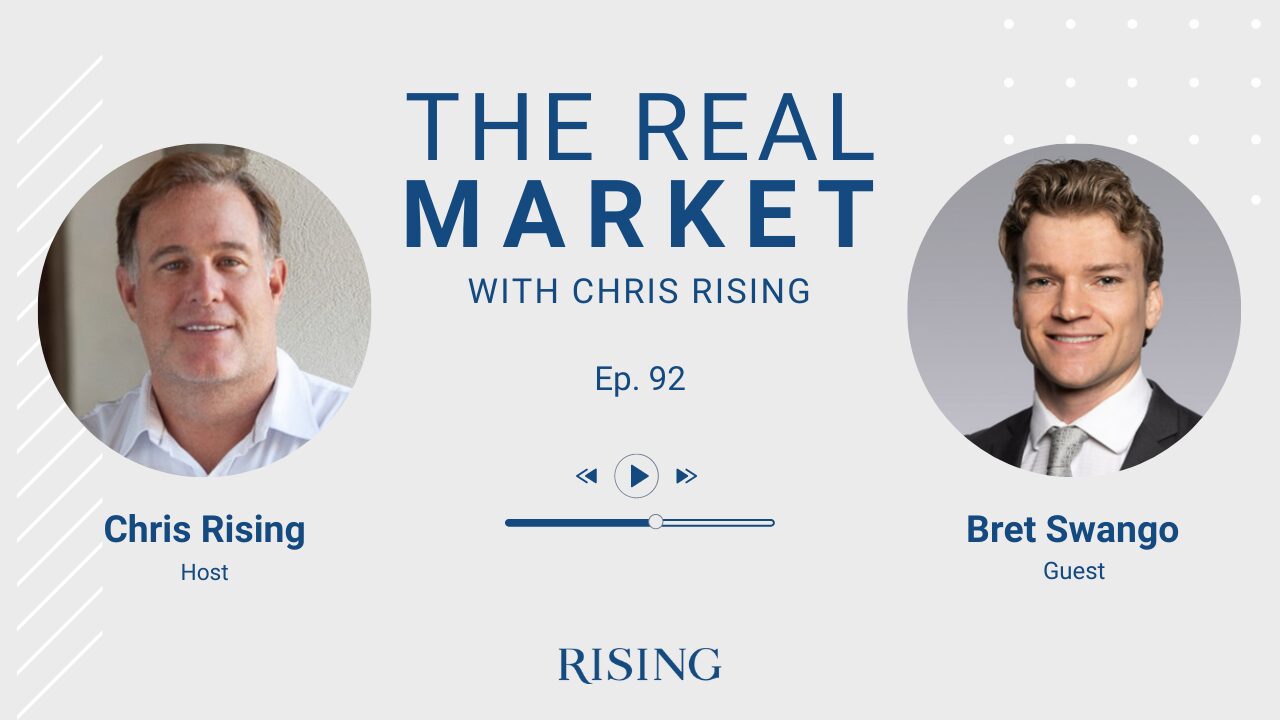
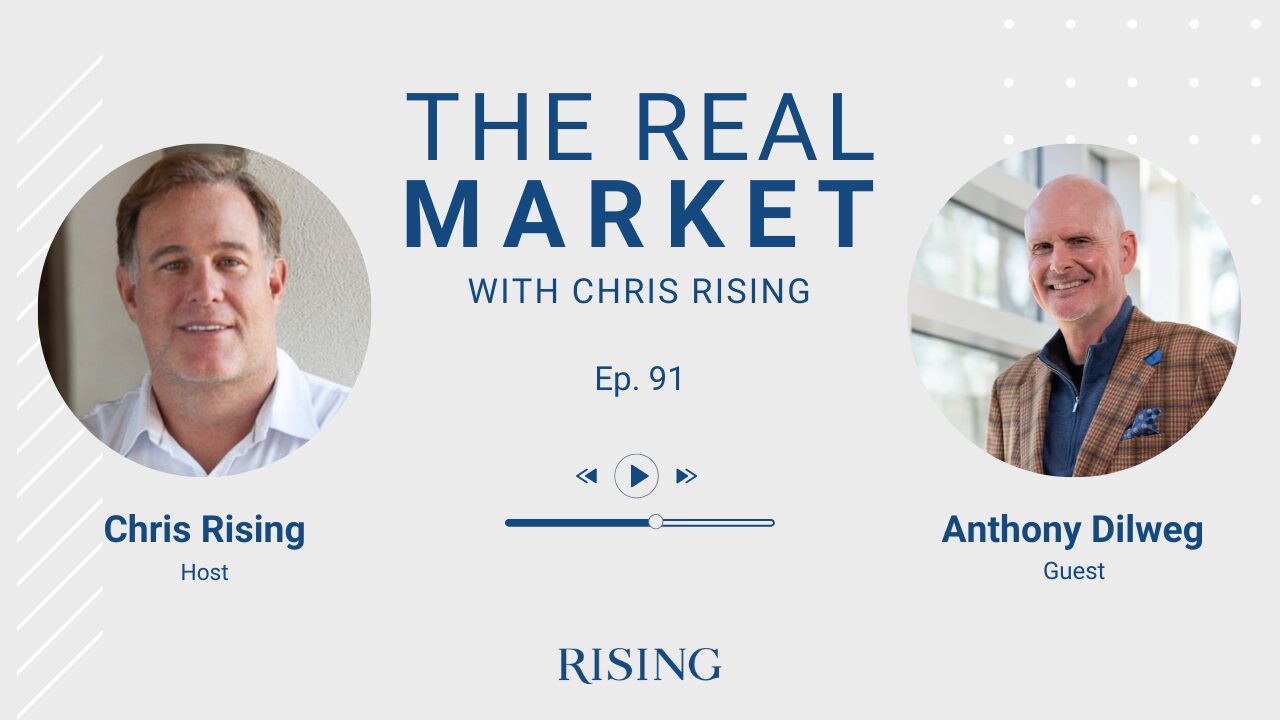
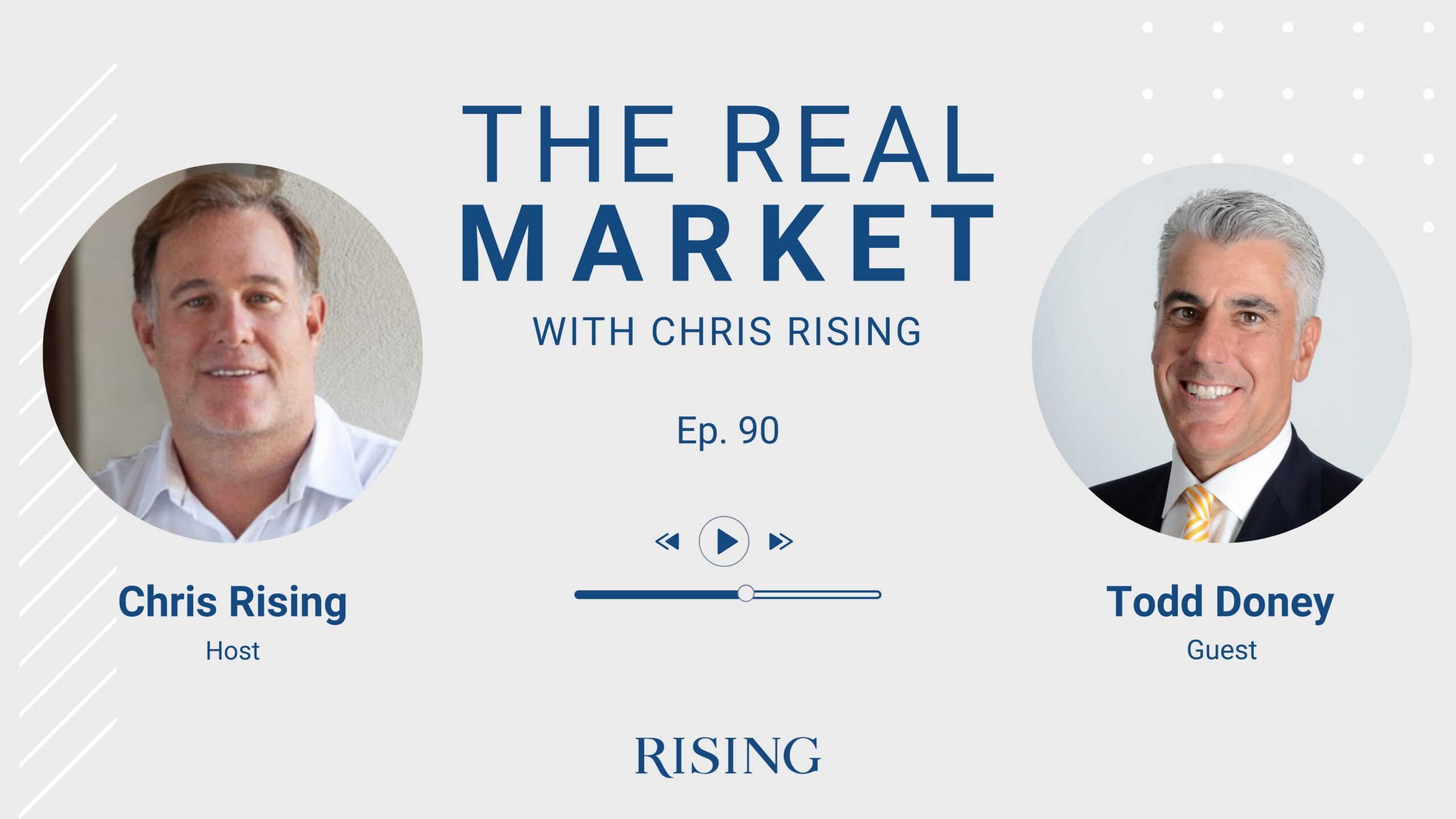
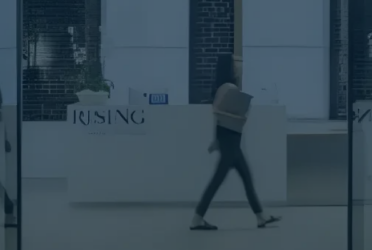
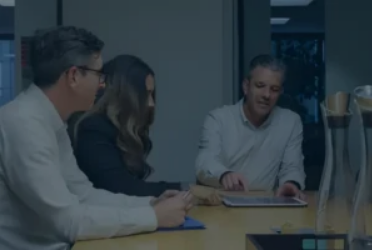
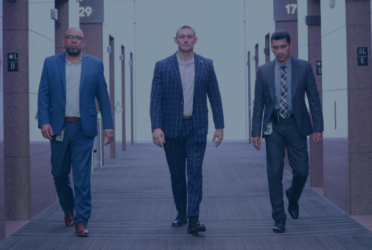
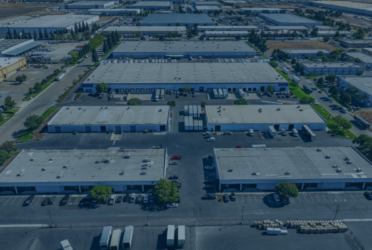
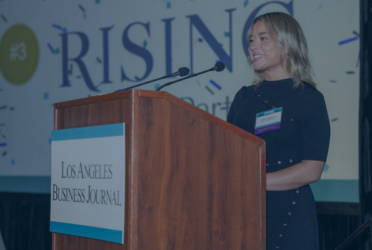
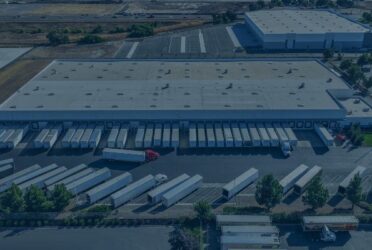
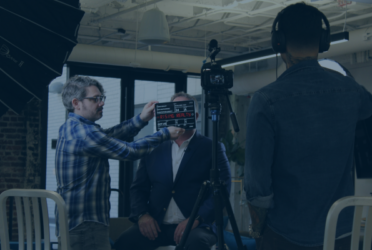
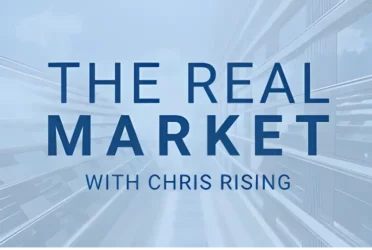 Podcast
Podcast